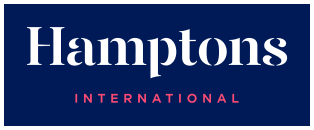Sectional title market review - Claremont Upper
Category News
The months of August, September & October 2018 saw a total of four sales recorded by PropStats in the Claremont Upper area. One was recorded during August, two in September and one in October.
These occurred at:
- 1301 Docaster at Marlborough Park. 82 sqm sold for R2 550 000
- A905 The Claremont.53 sqm apartment for R1 650 000
- 407 Intaba. 117 sqm sold for R4 598 000
- 506 Montclare Place. 117 sqm sold for R4 500 000.
Of interest is that the sales recorded for the same period during 2017 the number of sales equalled more than double this number.
The average time on market for these properties was 56 days being twice the length of properties that sold this time last year.
At present there are 74 sectional title properties on the market in Claremont Upper (above the railway line) which is a significant number. More are entering the market daily.
An appreciable number of sellers have had to reduce the listing price of their properties.
The current market dynamic therefore remains constant:
- Supply exceeds demand
- Buyers are hesitant to commit
- Most properties are taking considerably longer to sell.
The four sales that occurred over this review period have one critical aspect in common:
Price was aligned with the prevailing market.
In the absence of such alignment a property will not sell in any market - good or bad.
Despite all of our current woes, properties are selling and there is activity in the market. To ensure a sale we must keep market-alignment front of mind insofar as price is concerned.
Things have been worse
While the property market is in a downward trend, it is by no means the worst market that has been seen and it is nowhere near the lows of the 2008 Global Financial Crisis.
In 2009, the Seeff Property Group for example experienced a decline in sales of 25% year-on-year. This year, we are only down by 5% year-on-year.
Perhaps we ought not to measure the market against the boom-phase performance rather than the average performance and capital growth in the medium to long term.
All economies and markets go through phases and what we are seeing now, is all still part of the fall-out of the Zuma-administration and poor economic and political decisions.
South Africa, the economy and the property market have always had to deal with challenges, from the political instability of the 1980s to early 1990s, high inflation and interest rates of up to 16% - 25% at times.
The two main factors which drive the market, is sentiment and the interest rate, which, at 10% is still at one of the best levels in three decades.
The banks are also still lending and home loans granted is in fact up: year-on-year. The flat price growth also favours buyers.
History has shown that SA property prices have generally tended to outperform economic growth.
Other times SA property has faced challenges
1983-1987 - interest rate range of 20%-25%, you could not sell anything in Camps Bay. Just five years ago, you could still buy in Camps Bay for R6m, now the entry level price is R10 million
- 1992/3 - major threat of a revolution, market was practically dead, for most of the 1990s, interest rate in 18%-20% range, peaking at 25.5% in 1998 - during this time, a new seafront development, Clifton View came onto the market, could not sell a massive 250sqm apartment with two undercover parkings for R1.5, today, you will pay R30 million and a parking alone, will cost you R1.5 million
- 1994 - first democratic elections and new era for SA, but interest rate was still at 16.25% and in fact remained high throughout, peaking in 1998 at 25.5%, despite economic growth in the 2.5%-3.5%
- 1998 - economic slump to just 0.5% growth, picking up to 2.5% in 1999 before economy started its serious uptick towards the 2000-2007 boom phase
- 2002 - prior to 2002, South Africans weren't buying, but foreigners did, seeing the value of property in Cape Town
- 2000-2007 - economic boom with growth of 4%-5.5% range, yet the interest rate still in the 13%-15% range, only coming down to 10.5% (the current level) in 2005
- 2007 - introduction of NCR (National Credit Regulatory) with massive impact on property and buyers' ability to obtain finance, banks tightened lending, perhaps too much for a time
- 2008 - Global Financial Crisis (GFC) hits property, market tanked and interest rate climbed to 15.5% by mid-2008
- 2010 - we thought that the World Cup was going to bring buyers aplenty, well, it did not, save for the odd foreigner, there was no large-scale uptick in luxury home buying
- 2010-2014 - a very slow market recovery despite an interest rate of 8.5%-9.5%
- 2014 - 2017 - property boom which outpaced economic growth, especially in high demand areas, the Cape metro in particular, much of it attributed to the DA government
Home is our Story and property our passion.
To discuss your next property move, be sure to contact us.
Seeff Southern Suburbs | +27 21 794 5252 | southernsuburbs@seeff.com
Author: Sean Guy





 Beyond your expectation
Beyond your expectation